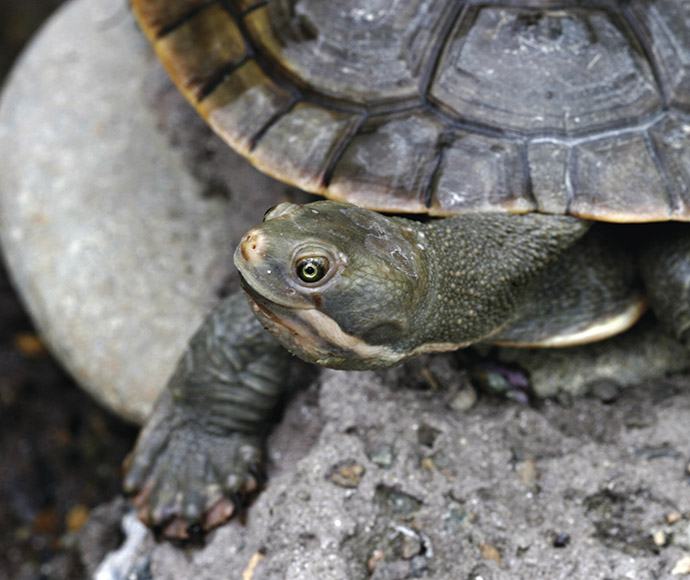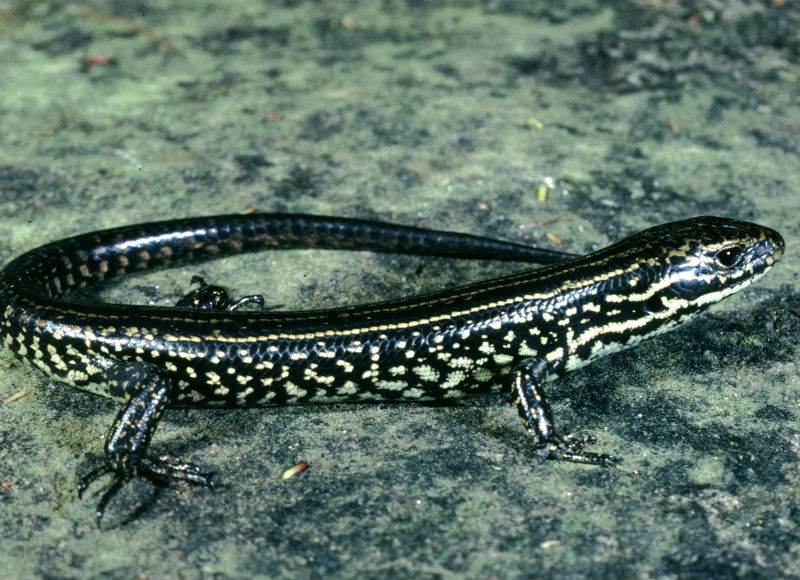Some reptiles, such as freshwater turtles, live in wetlands for a large part of their life cycles.
Others, such as water skinks and red-bellied black snakes, rely on wetlands sometimes and spend the rest of their lives on dry land, usually quite close to streams or open water.
Reptiles found in wetlands
Freshwater turtles
Freshwater turtles found in NSW wetlands include the eastern long-necked turtle, broad-shelled river turtle (found in rivers of Murray−Darling Basin) and the Murray turtle (found in rivers of the Murray−Darling Basin and associated drainages west of the Great Dividing Range).
Water skinks
Five species of water skink have been found living in or close to NSW wetlands: the Blue Mountains water skink, the alpine water skink, the eastern water skink, the southern water skink and the swamp water skink.
Snakes
Snakes that spend a lot of time around NSW wetlands and rivers include the red-bellied black snake, the Australian copperhead, the eastern tiger snake, the blue-bellied black snake and the rough-scaled snake.
Eastern water dragon
The eastern water dragon lives in coastal waters, including marine wetlands. It is a good tree climber and likes to laze on branches overhanging the water.
Why do reptiles need wetlands?
Reptiles that use wetlands do so because they either live in water for much of their lives or rely on water for their survival. They also find plentiful food sources in wetlands, in the form of other animals. Reptiles rely on wetlands in the following ways:
- Freshwater turtles use rivers, lakes and billabongs for feeding and breeding.
- Water skinks also rely on wetlands such as upland swamps for their food sources (insects, grubs and larvae) and as cover from predators. Some species, such as the alpine and Blue Mountains water skink, can survive at high altitudes – an unusual feat for cold-blooded animals.
- Snakes are attracted to rivers and wetlands because of the abundance of food in the form of frogs and waterbird eggs.
- The Eastern water dragon feeds on small reptiles, small mammals, frogs, insects, worms, molluscs, vegetation and fruit in or near the wetlands. It lays its eggs in a hole above the floodline of a wetland. It can also drop from branches into the water and hide from danger for up to 30 minutes.
Threats to reptiles in wetlands
The Blue Mountains water skink is listed as endangered in New South Wales under the Biodiversity Conservation Act 2016. It has been identified in only 40 locations in swamps in the Newnes Plateau and Blue Mountains. It faces a number of threats that lead to a loss of its habitat, including urbanisation, climate change, bushfires and agriculture.
Freshwater turtles face similar threats, as well as others threats such as predatory behaviour by foxes and pigs, which rob their nests and consume their eggs. A study on freshwater turtles in the Lowbidgee floodplain found they responded well to flooding because it allowed them to move between sites. The study recommended maintaining refuge sites for adults during droughts and connecting habitats to enhance feeding and dispersal after flooding.

